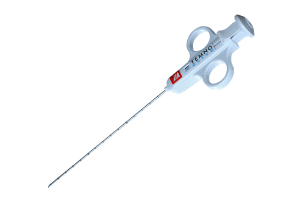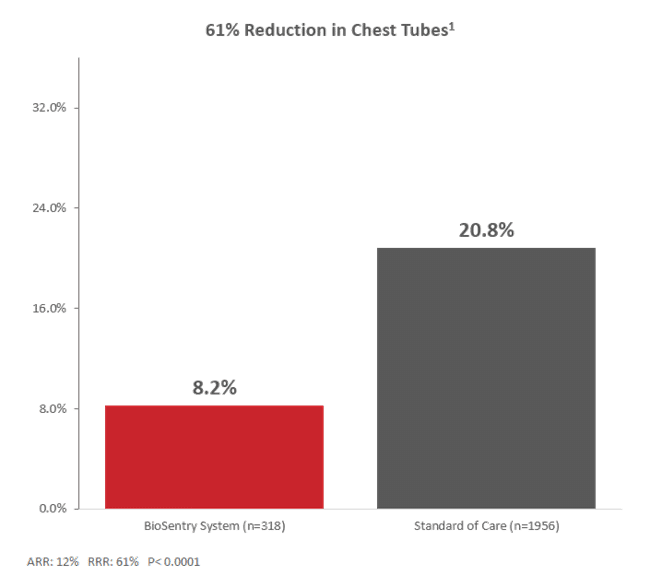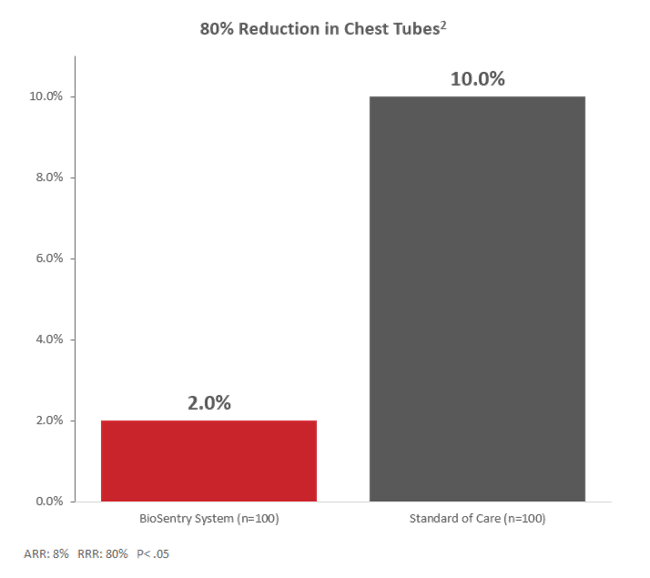
TEMNO Elite™ Biopsy System
The TEMNO Elite Biopsy System offers the reliability you expect with new features designed to provide superior soft…
The BioSentry Tract Sealant System deploys a self-expanding hydrogel plug into the pleural space following a percutaneous lung biopsy. This creates an airtight seal that closes the pleural puncture and provides accuracy in marking a biopsy location for visualization during surgical resection.
Dehydrated plug is deployed with 0.5 cm
extending into the pleural space
Plug swells, creating an airtight seal
that closes the pleural puncture

ARR = Absolute Risk Reduction; RRR = Relative Risk Reduction
STUDY DESIGN
Retrospective study, comparing patients receiving BioSentry device (318) vs. control arm (1956) during percutaneous lung biopsy. To adjust for potential selection bias, patients in the treated group were matched 1:1 to patients in the control group using propensity score matching.

STUDY DESIGN
Retrospective review of 200 consecutive patients (100 consecutive biopsies were done without any intervention and the next 100 consecutive biopsies done with the BioSentry System).
† Data on File
REFERENCES
1 Ahrar JU, Gupta S, Ensor JE et al. Efficacy of a Self-expanding Tract Sealant Device in the Reduction of Pneumothorax and Chest Tube Placement Rates After Percutaneous Lung Biopsy: A Matched Controlled Study Using Propensity Score Analysis. Cardiovasc Intervent Radiol. 2017; Feb 40(2):270-276. doi: 10.1007/s00270-016-1489-9.
2 Grage RA, Naveed MA, MD, Keogh S, Wang D. Efficacy of a Dehydrated Hydrogel Plug to Reduce Complications Associated With Computed Tomography–guided Percutaneous Transthoracic Needle Biopsy. J Thorac Imaging. 2017; Jan 32(1):57-62, doi: 10.1097/RTI.0000000000000247.
407036001_001 ID 101123